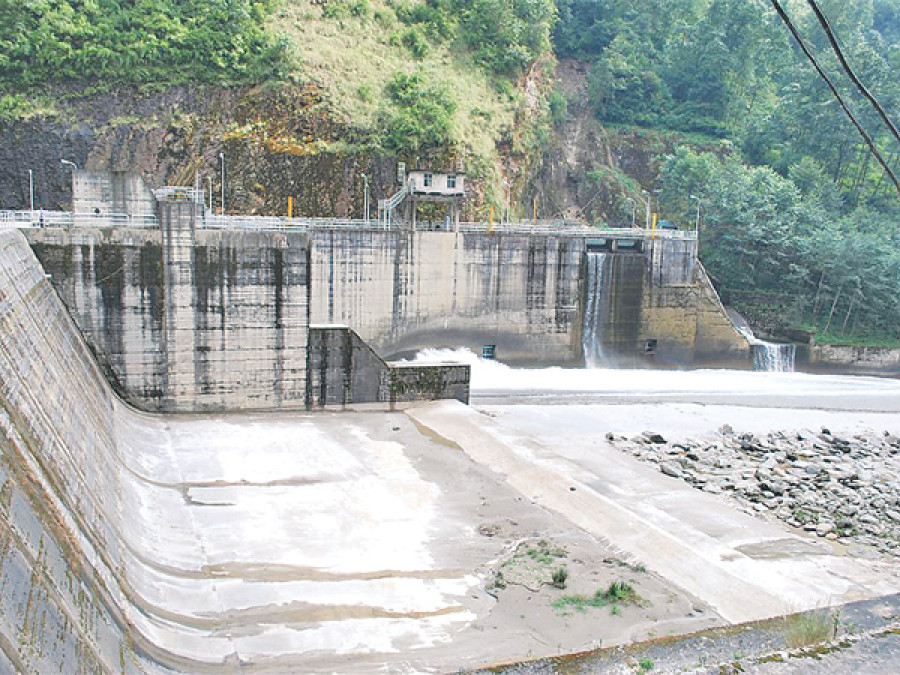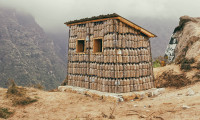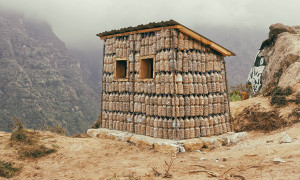Money
Hydropower projects knocked out by earthquake still offline
Privately-built hydropower projects that were knocked out by the April 25 earthquake have not been able to resume operations even though more than six months havepassed since the disaster
Sanjeev Giri
Privately-built hydropower projects that were knocked out by the April 25 earthquake have not been able to resume operations even though more than six months have
passed since the disaster, leading to an energy shortfall of 93 MW in the integrated national grid.
According to the Nepal Electricity Authority (NEA), it has been operating all of its hydropower plants across the country at full capacity, but the projects run by the private sector have not yet started feeding power into the system, and the impact may be felt in the coming winter.
As per the Post-Disaster Needs Assessment (PDNA) prepared by the National Planning Commission, several hydropower facilities with a combined capacity 115 MW out of the total installed capacity of 787 MW (on-grid and off-grid) were severely damaged by the killer quake, while facilities with a combined capacity of 60 MW have been partially damaged. The 19 hydropower projects constructed by private developers produce a combined 109 MW of power. Likewise, under-construction hydropower projects with a combined capacity of about 1,000 MW owned by independent power producers and the NEA have been partially damaged, which means the project completion deadline will be extended.
As per the PDNA, Nepal’s energy sector sustained losses worth Rs18.75 billion due to the earthquake and aftershocks. The PDNA report shows that the projects built by private sector developers suffered greater physical damage compared to those erected by the public sector.
“We are not aware about the status of the projects developed by the private sector since we only have a commercial relationship with them. Our role is to buy energy from them and sell it by integrating it into the national grid,” said Mukesh Raj Kafle, managing director of the NEA. “The power shortfall of 93 MW, however, is a huge one, and needs to be taken care of at the earliest possible.”
While 93 MW of energy is still offline, the state-owned power utility, however, has succeeded in connecting 22 MW generated by the Mai Khola Hydropower Project to the system. The Ilam-based project has helped to manage electricity issues in the Eastern Development Region. “This project will help us manage the load in the country’s eastern part,” Kafle said.
According to Khadga Bahadur Bisht, a number of issues like obstructions on the access road, slow progress of the insurance claims made by project developers, and unavailability of manpower, among others, have posed a big problem for project developers.
“In particular, projects situated in Sindhupalchok district have encountered problems regarding access roads,” Bisht said. “Most of the projects have suffered damage that will take three to six months to be repaired.”
The reconstruction initiatives were also affected by the ongoing political turmoil which has resulted in shortages of petroleum and other products. The upcoming Dashain festival too will slow things down as people will be taking a break from work for around a month.
Bisht added that most of the projects had already completed tasks like field visit, survey, report preparation and submission for insurance claims, but the insurance companies had been proceeding slowly making it difficult for them to move ahead.
Projects like the Upper Bhote Koshi, Indrawati III, Sunkoshi, Baramchi, Upper Hadi Khola, Shiuri Khola, Sipring Khola, Middle Chaku, Lower Chaku, Chaku Khola, Charnawati and Aankhu Khola I, among others, were badly damaged by the April 25 earthquake. The 45 MW Bhote Koshi Hydropower Project has suffered the most, according to the Independent Power Producers’ Association,
Nepal (Ippan). “It might take at least 15-16 months for the Bhote Koshi project to resume operations from the date maintenance work is started,” Bisht said.
Bisht said the immobile National Reconstruction Authority was another
reason that has made life difficult for developers. As the PDNA was prepared by the National Planning Commission and its recommendations will be addressed by the authority, the Ministry of Energy has shown little interest in helping developers to restore the projects. “Some of the developers have been suffering from a cash crunch too,” Bisht said.




 7.12°C Kathmandu
7.12°C Kathmandu















